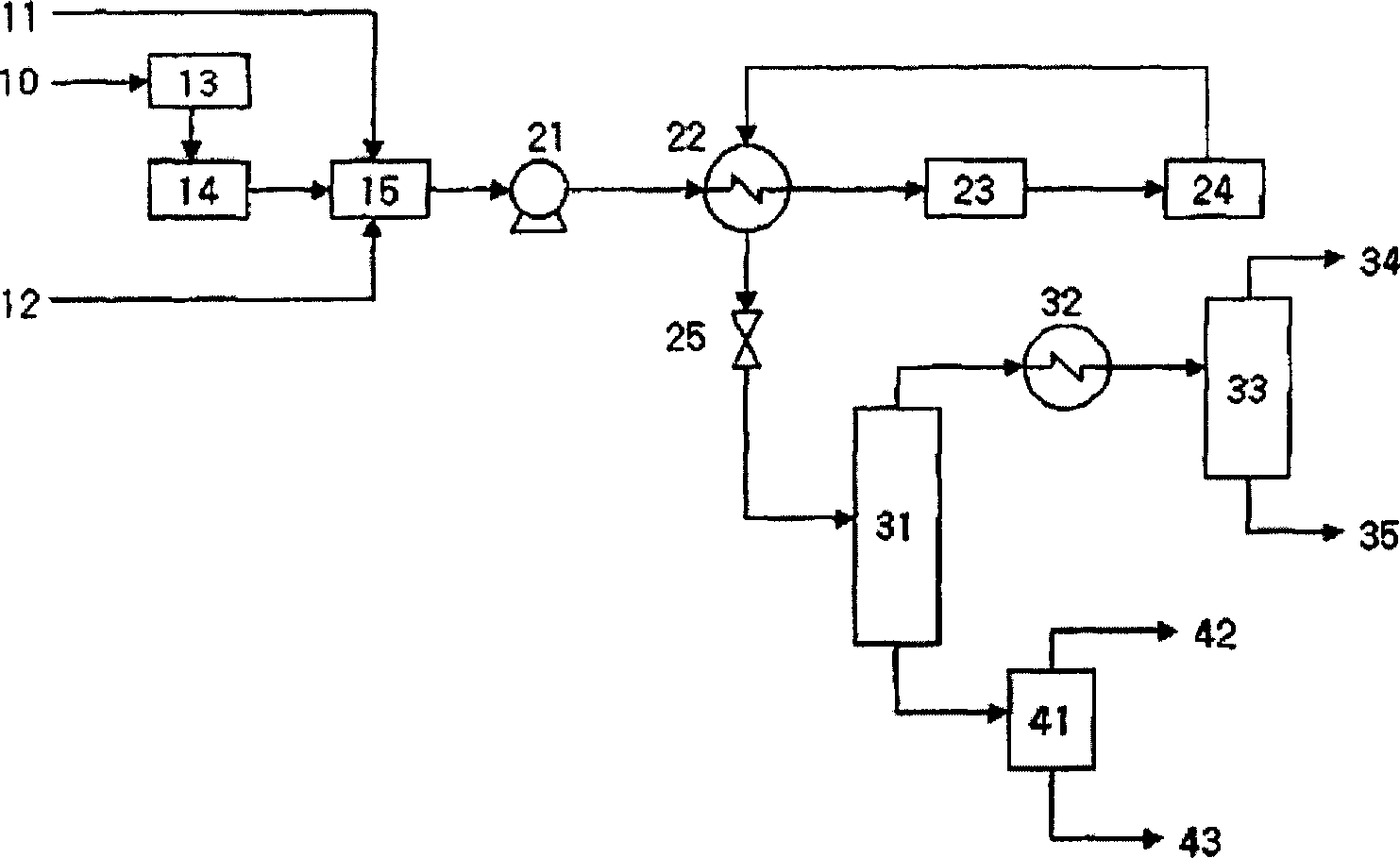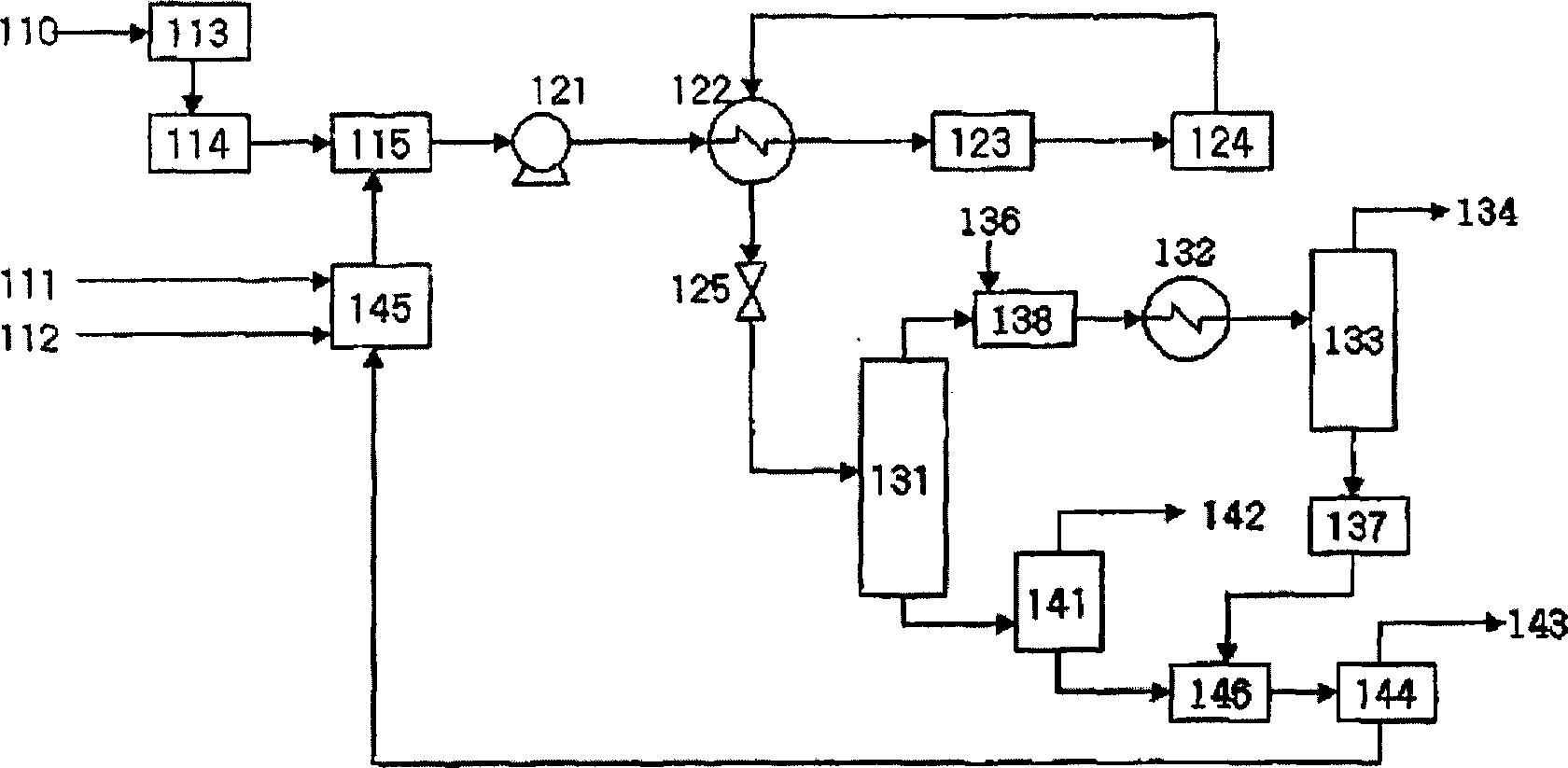Method for recovering toluene diamine from high boiling tar residue discharged from toluene diisocyanate preparation process
A technology for toluene diisocyanate and toluene diamine, which is applied in the field of recovering toluene diamine from high-boiling tar residues discharged from the preparation process of toluene diisocyanate, can solve problems such as high operating costs, large processing facilities, and prolonged process time.
- Summary
- Abstract
- Description
- Claims
- Application Information
AI Technical Summary
Problems solved by technology
Method used
Image
Examples
Embodiment approach 1
[0048] and figure 1 As in the illustrated embodiment, the slurry is pressurized with a high pressure pump 121 and then heat exchanged in a heat exchanger 122 with the hydrolyzed slurry from the previous hydrolysis process in a reactor 124, followed by a heat exchange in a heater 123. Additional heating is applied followed by hydrolysis treatment in reactor 124. Hydrolysis reactor 124 adopts with figure 1 The same operating conditions as in reactor 24.
[0049] figure 2 The illustrated embodiment features oxidative removal of contaminants from the first overhead fraction while recycling spent catalyst and waste water discharged from the toluenediamine recovery process.
[0050] like figure 2 As shown, the hydrolyzed slurry flows through the heat exchanger 122 and the pressure reducing valve 125, and then enters the distillation column 131, during which the slurry cools down in the heat exchanger 122, and the pressure is reduced through the pressure reducing valve 125. In...
Embodiment 1
[0069] The same equipment and high-boiling tar residue as in Comparative Example 1 were used. 200 g of the solid residue was dispersed in 600 g of a 5% by weight aqueous solution of sodium carbonate, and then a hydrolysis reaction was performed at 300° C. and 100 atmospheres for 1 minute. The analytical data and reaction conditions of the reaction product are shown in Table 2 below. The hydrolyzate was found to contain 5 ppm of chromium and 7 ppm of molybdenum when measured with the same analyzer as in Comparative Example 4.
Embodiment 2
[0071] The same procedure as in Example 1 was carried out, except that a 3% by weight aqueous sodium carbonate solution was used instead of a 5% by weight aqueous sodium carbonate solution. The analytical data and reaction conditions of the reaction product are shown in Table 2 below.
PUM
 Login to View More
Login to View More Abstract
Description
Claims
Application Information
 Login to View More
Login to View More - R&D
- Intellectual Property
- Life Sciences
- Materials
- Tech Scout
- Unparalleled Data Quality
- Higher Quality Content
- 60% Fewer Hallucinations
Browse by: Latest US Patents, China's latest patents, Technical Efficacy Thesaurus, Application Domain, Technology Topic, Popular Technical Reports.
© 2025 PatSnap. All rights reserved.Legal|Privacy policy|Modern Slavery Act Transparency Statement|Sitemap|About US| Contact US: help@patsnap.com


